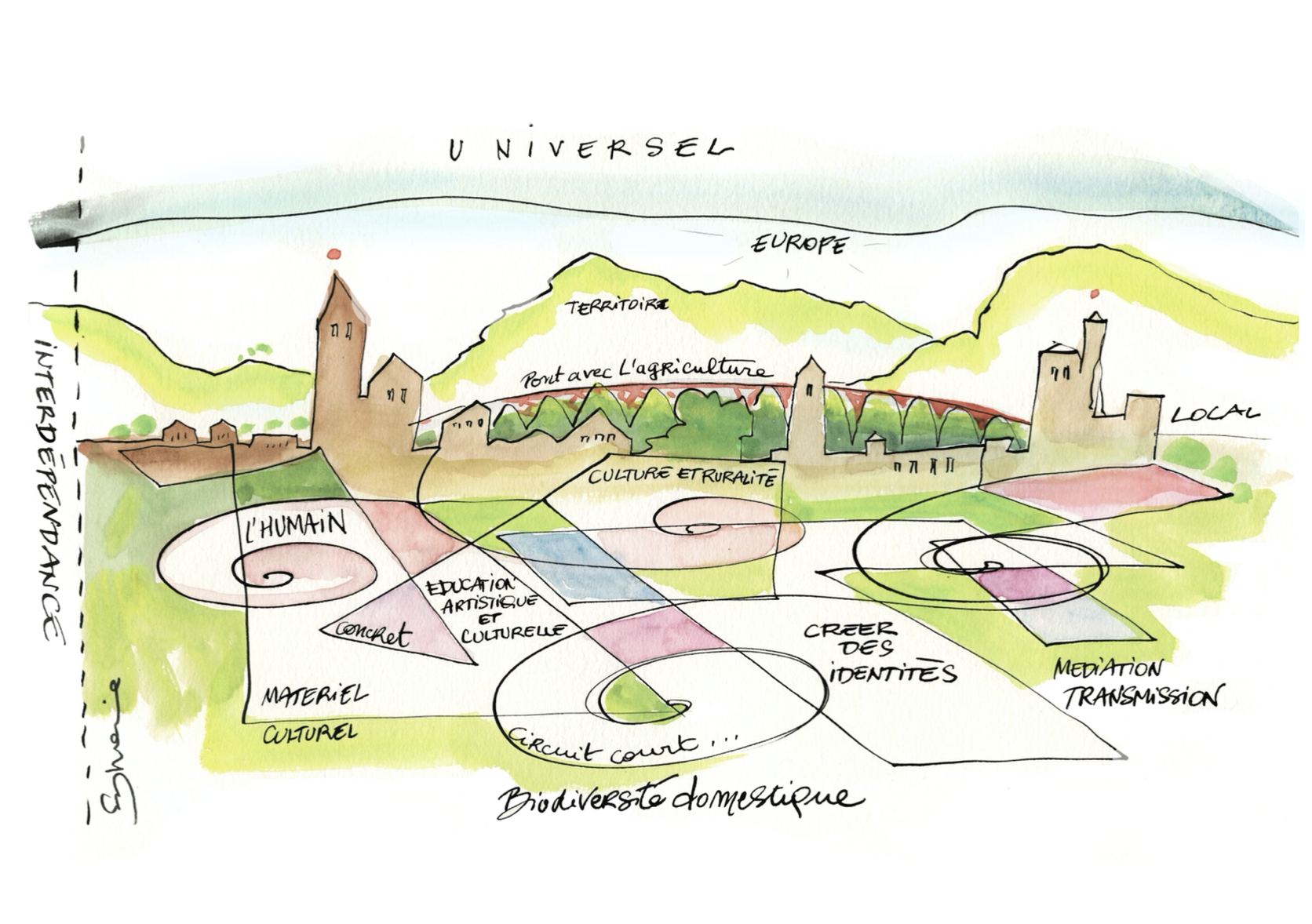From Monday 27 to Friday 31 May, the ACCR organised a week of webinars on contemporary tourism issues led by teacher-researchers from theInstitut de Recherche et d'Études Supérieures du Tourisme (IREST), a multi-disciplinary tourism training institute offering professional bachelor's and master's degrees, attached to the University of Paris 1 Panthéon-Sorbonne.
Teams from the network and our partners were invited to come together over lunchtime for a one-hour session designed as an introduction to a specific theme. These included tourism and big data, territorial development strategy, sustainable tourism and its indicators, tourism and arts and crafts, and destination economics through the study of the role of heritage and local partners.
For the ACCR, the aim of this initiative is twofold: to support teams as they develop their skills by presenting them with ongoing training opportunities to which they can apply if they wish to acquire or strengthen certain skills, and to identify their ongoing training needs in the tourism field so as to provide an appropriate response, either by setting up a training course specifically designed for the ACCR network or by guiding the topics of discussion at the network's annual meetings or online job cafés.
/ Tourism and big data
This first session focused on the following issue: how has research seized on digital tourism data to gain a better understanding of a region's tourism issues?
By its very nature, this new data implies new processing methods and new paradigms for understanding and exploiting it with a view to rethinking tourism observatories.
The aim was to understand what massive data can say about tourism practices and the visitor experience. To make Big Data their own, researchers and professionals have had to apply algorithmic thinking, introducing a new form of artificial and human intelligence.
One of the major changes lies in the ways in which knowledge is produced, given that tourists themselves produce data, either through their own practices or voluntarily by leaving comments online, for example. This latter point reflects a willingness on the part of tourists to pass on information. There is a shift from experts to peers.
One of the difficulties in processing the data created by tourists lies in their heterogeneous nature, which makes dialogue between them more complex. In fact, they are based on different biases: each platform has its own language, bias and basic angle. A sociology specific to social networks also needs to be established, as not all nationalities contribute in the same way or on the same platforms, which also have distinct life cycles.
/ Territorial development strategy
Tourism and regional development are closely linked. These links raise issues in terms of strategy (development, planning, regulation), stakeholders, governance and inter-territorial cooperation. This presentation looked at the players and tools involved in regional tourism development, and used concrete examples to show the extent to which heritage sites are part of these dynamics.
Cooperation between the various levels of local government, and between private and public players in their relationships and arrangements, whether formal or informal, was discussed. This enabled us to sketch out a systemic approach to tourism, which should be seen as a system of communicating players, places and practices. One of the challenges of this intervention was to determine how heritage sites fit into this dynamic by redefining the relationship between heritage, tourism and territory. Heritage thus becomes a source of local development.
/ Sustainable tourism and its indicators
This third webinar looked at the paradoxes of tourism: can tourism really be sustainable given the way it currently operates? The speaker returned to the four dimensions of sustainable development: involving local communities, satisfying all stakeholders, thinking about the local economic footprint and respecting the environment. Three levels of analysis are needed to understand sustainability: the scale of the destination, the chain of economic players in a region, and the impact of the actions produced.
Governments are interested in the cultural offer because it has a multiplier effect and is a source of economic revenue. However, we are reaching the limits of this growth, with the phenomena of over-attendance exhausting local populations and natural resources, the standardisation of cultures, and the dependence of certain sectors which are, as a result, highly sensitive to crises, even though they have a strong capacity for resilience.
The notion of the sustainability of an experience should be looked at in terms of the visitor's journey, not just the destination itself. Sustainability also requires the implementation of a partnership strategy, yet the players involved see themselves more as competitors and are not yet thinking enough in terms of destinations.
/ Tourism and arts and crafts
The link between tourism and arts and crafts seems to fit in well with the changes and trends in the tourism sector, such as creative tourism, experiential tourism, regenerative tourism and sustainable tourism. This study of the link between tourism and arts and crafts has thus enabled us to explore the contemporary challenges facing tourism.
The tourism sector continues to change. For a long time, the emphasis has been on cultural tourism, which is fundamental insofar as it helps to attract visitors, inspires new narratives that promote regional development and makes places unique and distinctive. Creative tourism will develop the potential of visitors through active participation.
Arts and crafts can create new tourist products and new themes for visits, boost the appeal of certain regions, revive local tourism and encourage the networking of new players, stimulating the emergence of new economies, particularly circular economies.
/ Destination economy, the role of heritage and local partners
Revitalising the destination economy means strengthening the synergies between heritage and local stakeholders. To develop and diversify the audience for cultural events, it is necessary to establish collaboration between the public and private sectors and encourage the tourism industry to become part of local cultural and heritage policies. This presentation explored partnership strategies likely to encourage the development of the local economy at the same time as the enhancement of cultural heritage, by transposing them to the context of the CCRs.
In particular, it presented UNESCO's Win-Win method, an integrated, participatory model with a bottom-up approach centred on visitors' experiences.

